Trees Birds Mammals Fish Amphibians Reptiles
Wild Algarve
Bookshop
Common Blue Butterfly - Polyommatus icarus
Phylum: Arthropoda - Class: Insecta - Order: Lepidoptera - Family: Lycaenidae
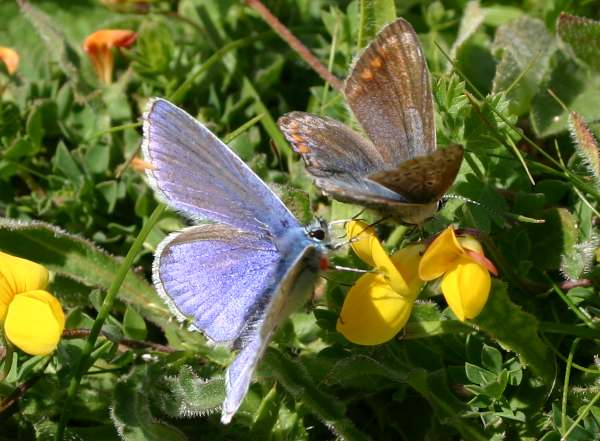
The Common Blue is rather less common in Britain than it used to be, but it is certainly one of the most widespread of all the 'blues. You can expect see these pretty little insects on wasteland and roadsides as well as in flowery grassland and sand dune sites from April
through until at least early September.
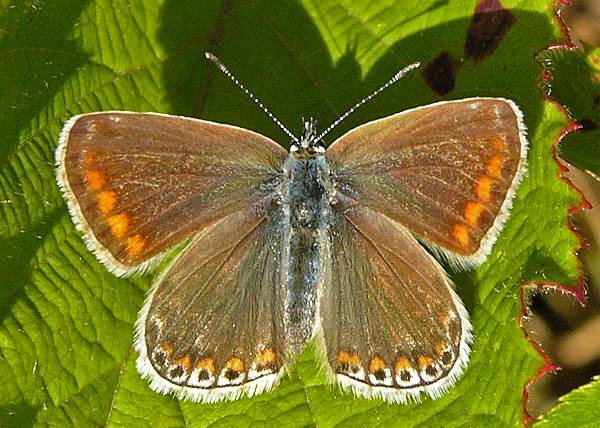
Above: a female Common Blue butterfly
The females are very variable in upperwing colouring, and perhaps they don't always deserve the name 'blue' as the example above shows. In contrast see the much bluer female pictured below.
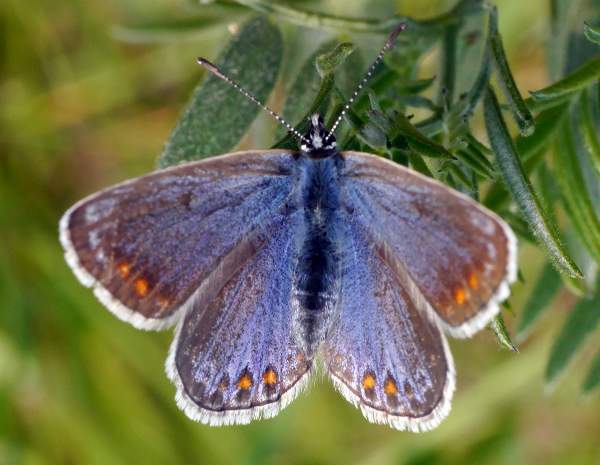
Female Common Blue butterflies have a distinctly violet tinge with orange markings near the
edges of their wings, so there's little chance of confusing the two sexes if you can get a reasonably close look at the upperwings.
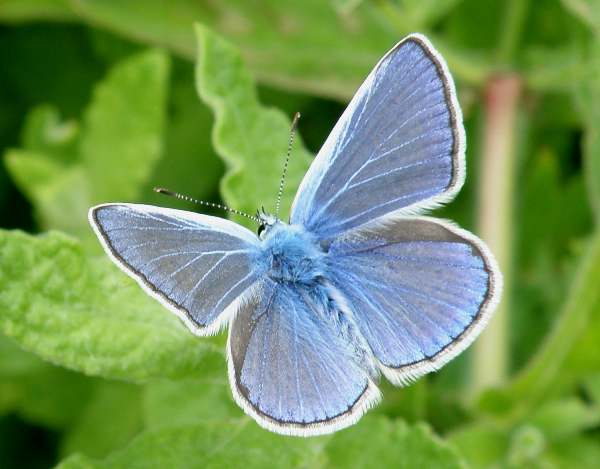
Above: a male Common Blue butterfly
Males of this species are paler and lack the orange upperwing markings; they do, however, vary in the depth of the blue colour of their wings. The dark-blue male pictured below was seen on a high limestone plateau in southern France in mid May.
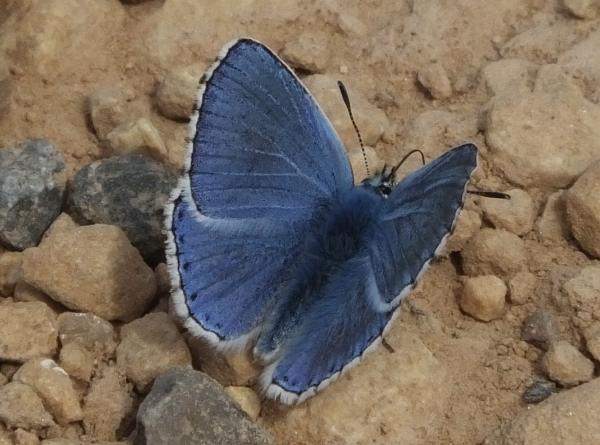
Key identification features of the Common Blue are white outer edges of the wings that are not crossed by dark lines radiating to the edges; orange patches near the outer edges of the undersides of the wings; and an additional (compared with other 'blues') rounded dark spot on the forewing some 5mm or so away from the body of the insect.
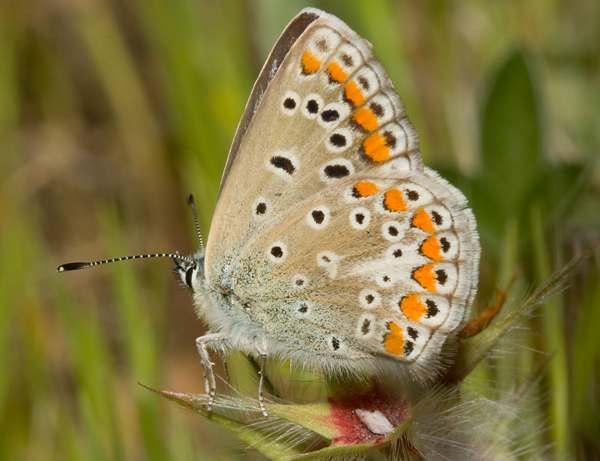
Distribution
In Britain the Common Blue occurs throughout England Wales and Scotland, and it is equally ubiquitous in Ireland. Elsewhere, this butterfly's range extends throughout Europe, including Scandinavia; down into North Africa, and across Asia into Japan.
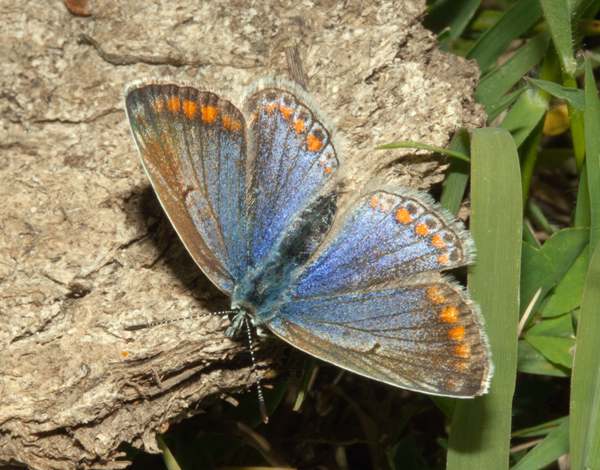
The female Common Blue shown above and the pair below are Polyommatus icarus f. celena and were photographed in the Algarve region of Portugal.
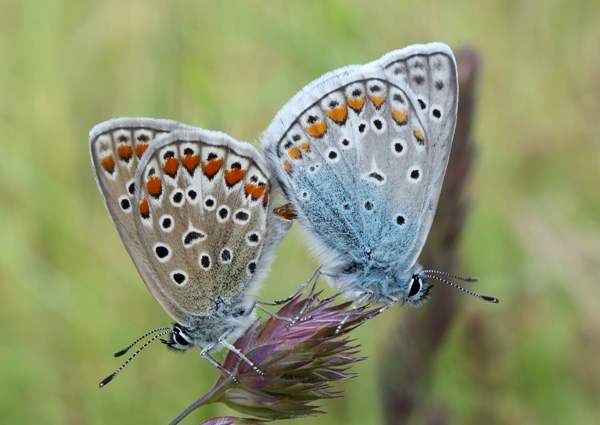
Lifecycle
The larval foodplants used by the Common Blue are various members of the pea family, Fabaceae. They include various vetches Vicia spp., Clovers Trifolium spp., Medicks Medicago spp., and most commonly Bird's-foot-trefoil Lotus corniculatus.
Common Blues overwinter in their half-grown larval state. The pale green caterpillar have yellow stripes; they produce a honeydew-like liquid on which ants feed. To protect their food suppliers the ants in turn ward off predators that might otherwise eat the caterpillars.
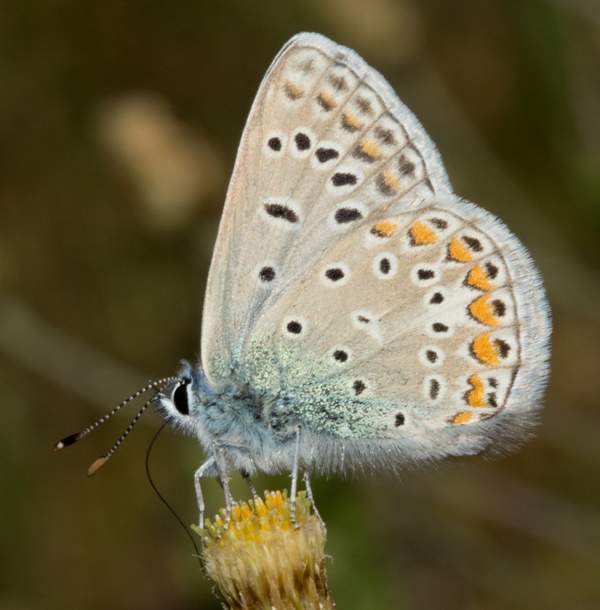
The chrysalis of the Common Blue Butterfly, which is formed on the ground, is olive green or olive brown. The pupae are attended by ants that sometimes drag the chrysalises into their anthills, from where the adult butterflies eventually emerge.
In southern Britain there are usually two broods, with the the first brood of butterflies appearing in May and June.
The second brood flies during in August and September. In the extreme south of England occasionally the autumn weather is warm enough for a partial third brood to be seen flying in October.
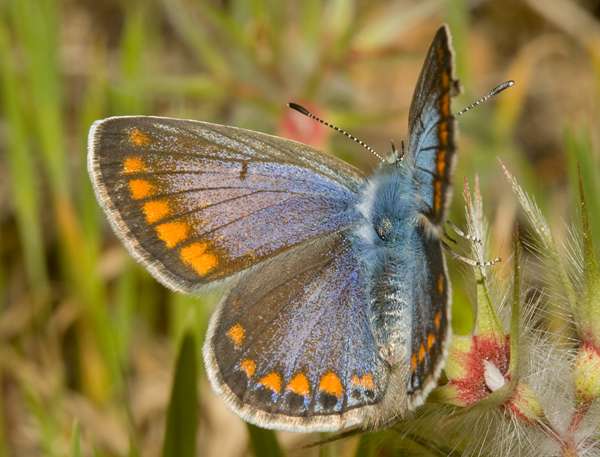
Above: a female Common Blue on Star Clover
Further north, in Scotland, there is usually just one brood, and the adults can be seen flying from June until early September.
Acknowledgements
This page includes pictures kindly contributed by Rob Petley-Jones and by Betty and Tony Rackham.
Studying butterflies and moths...
Excited by rivers and streams? So are we, and we're pretty sure you would find the Winding River Mystery trilogy of action-packed thrillers gripping reading too. Dead Drift, Dead Cert, and Dead End are Pat O'Reilly's latest river-based novels, and now they are available in ebook format. Full details on our website here...
Buy each volume in ebook format for only £2.47 on Amazon... Paperbacks also available on Amazon at £6.95 each. All proceeds go towards keeping the First Nature website online.
Please Help Us: If you have found this information interesting and useful, please consider helping to keep First Nature online by making a small donation towards the web hosting and internet costs.
Any donations over and above the essential running costs will help support the conservation work of Plantlife, the Rivers Trust and charitable botanic gardens - as do author royalties and publisher proceeds from books by Pat and Sue.